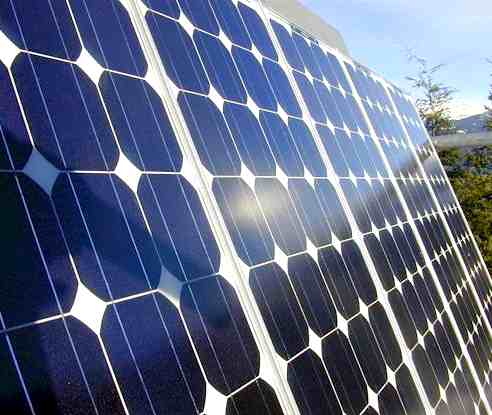Chinese government officials signed an agreement on Tuesday with First Solar, an American solar developer, for a 2,000-megawatt photovoltaic farm to be built in the Mongolian desert
Set for completion in 2019, the First Solar project represents the world’s biggest photovoltaic power plant project to date, and is part of an 11,950-megawatt renewable-energy park planned for Ordos City in Inner Mongolia.
The memorandum of understanding between Chinese officials and First Solar, the world’s largest photovoltaic cell manufacturer, would open a potentially vast solar market in China and follows the Chinese government’s recent moves to accelerate development of renewable energy.
When completed, the Ordos solar farm would generate enough electricity to power about three million Chinese homes, according to First Solar.
First Solar, based in Tempe, Ariz., is also likely to build a factory in China to make thin-film solar panels, said Mike Ahearn, the company’s chief executive. “It is significant that a non-Chinese company can land something like this in China,” Mr. Ahearn said in an interview.
Most proposed large-scale solar projects use solar thermal technology, which deploys mirrors to heat a liquid to create steam that drives an electricity-generating turbine. But as photovoltaic technology becomes more cost-competitive, utilities are turning to companies like First Solar for big solar power farms. Such projects generally have fewer environmental impacts and can be brought online faster than solar thermal plants.
“This is nuclear power-size scale,” Mr. Ahearn said of the China project. “A two-gigawatt solar project, if this is connected and is economical at the grid level, demonstrates that solar on a large scale really does work.”
Financial terms of the agreement have yet to be reached and will depend on China completing a feed-in tariff that pays a premium for electricity generated by renewable energy projects. First Solar said the 2,000-megawatt power plant would cost $5 billion to $6 billion if built in the United States today, but it said the cost to build such a project in China would probably be lower.
The Ordos agreement is the latest large-scale solar farm deal that First Solar has signed in recent months as it expands its business from manufacturing solar modules to building power plants. The company also has agreed to supply two California utilities with 1,100 megawatts of electricity from three big solar farms.
“Discussions with First Solar about building a factory in China demonstrate to investors in China that they can confidently invest in the most advanced technologies available,” Cao Zhichen, vice mayor of Ordos Municipal Government, said in a statement.
Until the announcement of the Ordos project, the largest single photovoltaic power plant was the 550-megawatt Topaz solar farm to be built by First Solar in California. As solar panel prices continue to fall and projects like Ordos bring further economies of scale, photovoltaic farms are expected to become more competitive with solar thermal power plants.
China is home to a blossoming solar industry thanks to generous government support. But Chinese companies like Suntech, the world’s third-largest solar module maker, export most of their products.
First Solar’s cadmium telluride solar cells are less efficient at converting sunlight into electricity than standard crystalline silicon cells made by companies like Suntech but they can be manufactured at a significantly lower cost.
“Given that China has built up homegrown companies like Suntech, it’s quite significant that they’re importing a U.S. world leader to the marketplace,” said Nathaniel Bullard, a solar analyst at New Energy Finance, a London market research firm. “This is going to help ensure technological leadership and not just manufacturing leadership.”
Suntech formed a venture last year to build solar power plants in the United States and has announced plans to open a factory in the Southwest.
A high-ranking Chinese official, Wu Bangguo, chairman of the Standing Committee of the National People’s Congress of China, attended the signing of the First Solar agreement in Arizona on Tuesday. The memorandum of understanding is just the first step in what is likely to be a long and complicated process to build such a gargantuan solar power plant in a country with little experience in constructing such projects.
“The ability to predict solar energy yields off these systems to make accurate financial predictions isn’t in place yet in China,” Mr. Ahearn said.
Plans for the Ordos renewable energy park call for wind farms to generate 6,950 megawatts, photovoltaic power plants to provide 3,900 megawatts and solar thermal farms to supply 720 megawatts. Biomass operations, fueled by organic materials like wood chips and straw, will contribute 310 megawatts; 70 megawatts will be available from hydro storage, a load-balancing technology that uses off-peak power to pump water to a high reservoir from which it can be released to turn turbines at peak demand periods.
First Solar will have to establish a supply chain to provide power inverters and other hardware needed for its part of the project as well as train Chinese contractors how to build and operate solar farms. Another hurdle is that China must upgrade its transmission system to connect the solar power plant to the grid.
Mr. Ahearn said it was probable that a Chinese utility would ultimately own and run the 16,000-acre solar power plant.
The agreement calls for ground to be broken on the first 30-megawatt phase of the project by June 1, 2010, followed by 100-megawatt and 870-megawatt additions to be completed by the end of 2014. A final 1,000-megawatt phase is scheduled to go online by Dec. 31, 2019.
Share your industry press now!
Are you a PR agency or sustainability-focused organization? Join the World of Renewables network FREE today and gain exclusive access to our platform to promote your business, share the latest industry news, and connect with a global audience of 700,000+ renewable energy professionals.
Register Now to start posting your updates and showcase your expertise to a highly engaged, environmentally-conscious community.
Find out more about our Content Partnership Programs.*2024 AWARD WINNER* Websites & Mobile Sites, Webby Winner, Peoples Voice 2024













